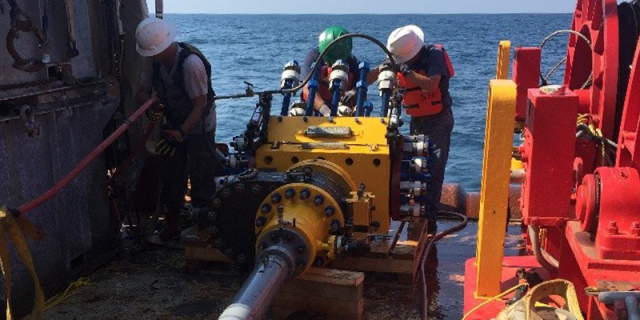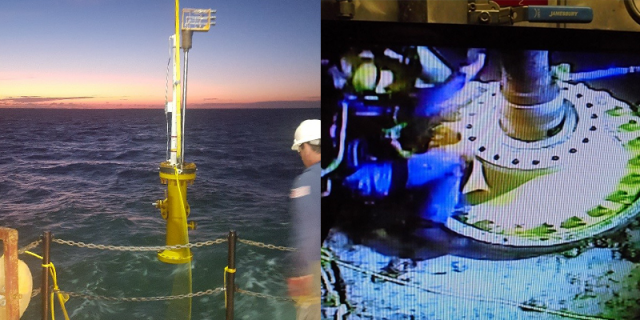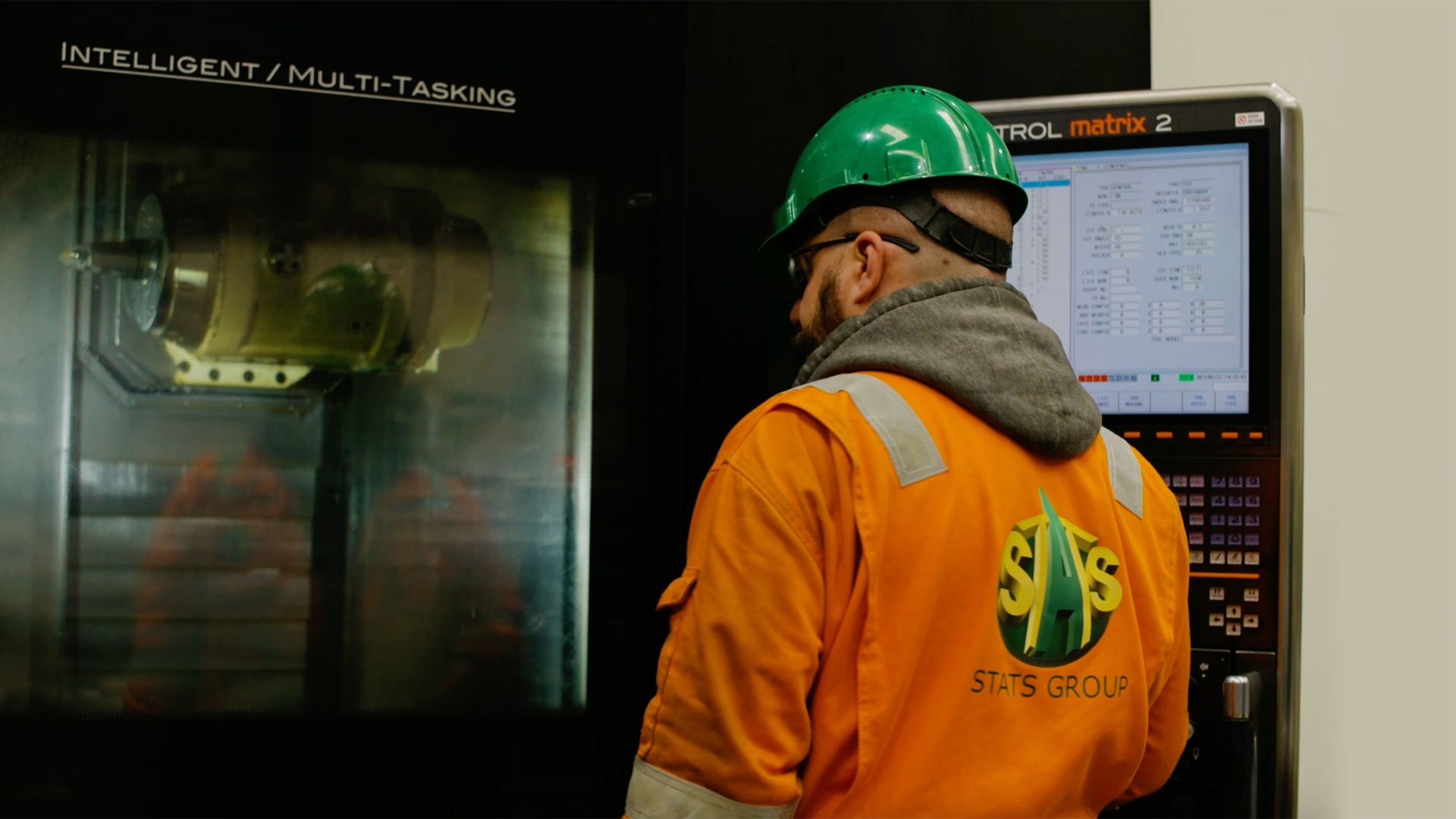Case Study
10" Subsea Hot Tapping and Plugging, Gulf of Mexico

STATS Group was contracted to assist with the isolation and abandonment of a 10” oil pipeline in the Gulf of Mexico, at a water depth of approximately 25 meters. The project requirement was to supply personnel and equipment to complete subsea hot tapping and plugging at two locations to facilitate the removal of a short section of pipework as part of a decommissioning project. Once the pipeline was successfully isolated, purged and cut, a mechanical connector with a blind flange was installed to terminate one end of the pipeline and the other end was fitted with a full bore valve and blind flange.
STATS patented BISEP® which is deployed through a mechanical hot tap clamp and slab valve was selected as it provides leak-tight isolation of pressurised pipelines through a single fitting. The BISEP offers significant safety advantages over traditional line stop technology as the hydraulically activated dual seals provide fully proven and monitored isolation of the pipeline inventory throughout the entire project.
Once the equipment and personnel were mobilised to the vessel, the slab valve and hot tap machine were then attached to the mechanical hot tap clamp and lowered to position. The hot tap clamp was bolted to the pipeline and a leak-test was conducted to confirm the integrity of the fitting prior to cutting into the live pipeline.
With both hot taps completed the first BISEP was lowered into position and attached to the slab valve and hot tap clamp. After a successful pressure test against the closed slab valve the pressure was equalised allowing the slab valve to be opened and the BISEP was deployed into the pipeline towards the pressure threat. The BISEP was then hydraulically activated energising the seals and creating the first isolation barrier. The second BISEP was then installed and deployed into the pipeline creating a midline isolation of the pressurised pipeline.

Each BISEP was then subject to a test regime to independently test both the primary and secondary seals and verify a zero-energy zone in the seal annulus. Once the test regime was complete, an Isolation Certificate was issued to notify all parties of the safe isolation of the pipe section.
A key project requirement was to flush the isolated section and ensure all the oil was removed prior to cutting the pipeline and recovering it to the vessel. STATS utilised the integrated 2” port on the BISEP launcher to attach a downline from the vessel to each BISEP launcher (upstream and downstream) allowing the pipe section to be flushed with seawater. This feature exclusive to the design of the BISEP, prevented additional hot tapping and reduced the number of fittings installed on the pipeline which saved the client time, money and reduced risk to the project.
Once the section of pipe to be removed was successfully cleaned and purged, the pipe was then cut behind each BISEP and safely recovered to the vessel. End connectors were then installed on both ends of the pipe and two new sections of pipe were installed consisting of two 2” flushing ports, a barred flange and a 10” ball valve. Following installation of the new pipe sections and with the BISEPs continuing to isolate the pipeline, a leak-test was conducted against the rear of the BISEP. Once the new section of piping was proven, both BISEP’s were unset, retracted and recovered to the surface. Completion plugs were installed in both mechanical hot tap clamps and the slab valves were removed and recovered to the vessel.
The client then launched a single dewatering pig from the processing facility on land to the newly installed 10” ball valve. De-oiling of the pipeline took three days and was completed when the dewatering pig was shown to have been received at the barred flange installed just before the 10” ball valve.
Upon receipt of the dewatering pig, the 10” ball valve was closed and 2” flushing hoses were installed. The pipe was then flushed through the 2” ports on the new section of pipe to verify that all the oil had been removed. Once the pipeline had been verified clean, the flushing hoses were recovered and the new section of pipe was removed. A blind flange was installed on one end of the connector effectively abandoning the section of pipeline running to the land based facility. Another blind flange was installed on the 10” ball valve securing that section of pipeline and allowing for future tie-ins.
Scott McNae, General Manager, USA for STATS Group, said: “Aside from weather delays the project was delivered according to plan and without incident. Major benefits achieved by the client from using the BISEP over traditional line-stop technology included requiring less fittings and hot tapping on the pipeline and the ability to flush between both isolation barriers prior to breaking containment thus avoiding any release of oil to the environment. Additionally, the design of the BISEP provides the ability to pressure test the newly installed pipework prior to introducing inventory back into the pipeline.
“This project marks a significant milestone as it is the first subsea deployment of the BISEP in the Gulf of Mexico and follows on from a previous successful subsea deployment of an Inline Weld Test Tool during 2016 for testing a critical weld in its ‘live’ position. We hope this successful project will be the catalyst to drive further hot tapping and isolation work in the Gulf of Mexico where we can offer a high integrity double block and bleed isolation alternative over traditional line-stop technology.”
